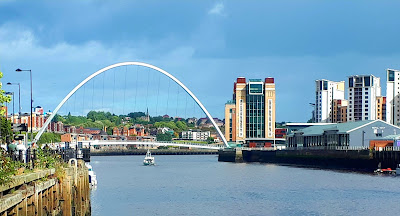There is a soothing sense of order about the Swiss countryside. It is a colourfully picturesque world tidily populated by small herds of cows and larger herds of humans. Things seem to run like, well, clockwork.
I mulled over this while people-watching (a traveller's prerogative, especially one using Peeps as a moniker) at a mountain restaurant, Acla Grischuna, above Lenzerheide. There may have been a plate of Swiss comfort food involved. Bratwurst and rösti, to be precise.
 |
| Note correctly hung bikes at our lunch spot |
There seems to be a dress code for mountain walking. Windproof jackets, long pants, sturdy shoes, bulging backpacks, the inevitable walking poles. We are the only ones wearing shorts. Spot the Kiwis.
And there are greetings to be given to those we meet on the trail. Always. So we've mastered grüezi, the Swiss-German variant of gidday.
Our time in Lenzerheide, the final leg of the trip, has exceeded expectations. On reflection, the idea of me mountain biking anywhere in Switzerland is laughable. Where are the flat bits? Oh, there aren't any.
There were clues. The comprehensive map of riding trails in the area provides a key clearly showing difficulty and fitness levels, along with gradient profiles. Some are even helpfully marked as suitable for families. Well, Swiss families are clearly a different kettle of fish to ours. I can't imagine taking Kiwi kids on a ride that involved a climb of some 500 metres.
We've done our best this week to ride as many of those neatly mapped trails as possible, given my technical limitations. And a not unnatural fear of hurting myself. Each day, Tour Leader has planned our route, incorporating a sensible lunch and siesta break back at home base. Some days, we've travelled huge distances in gondolas then cycled those same metres down again. It's been challenging but great fun.
The upside of all this up-ness, of course, is being surrounded by spectacular landscape. Even if it has meant pushing my bike uphill for 30 minutes. There's nothing sweeter than that final downhill homeward run with views such as this:
We treated ourselves to e-bikes for a day, proper mtb ones with the bells and whistles. (Translation: disc brakes, dropper posts and full suspension.) And did I mention the motor? If you haven't tried one, don't assume it's like riding a moped. It's definitely not. Pedalling uphill is still an effort. But, for me, the difference was that I could stay on the bike on the more challenging sections. More pedalling, less walking equals a happy Robyn. E-bikes are the future of transport. You heard it here first.
This brings the blog to an end. ('Last post', geddit?) We cycle back to Zurich over the next two days, then repack the bikes into their bags for the flight home.
I enjoy writing these reflections. It's my way of processing all that we've seen and done on this trip. A glorified travel diary, really, that I will one day re-read in my rest home armchair while waiting for 5 o'clock dinner.
And, if I'm to be honest, I love writing for an actual audience. So, thank you, Dear Readers, for your likes and comments. They have been gratefully received.
Au revoir!
Peeps
 |
| Lenzerheide lovelies Yep, that high! |


































